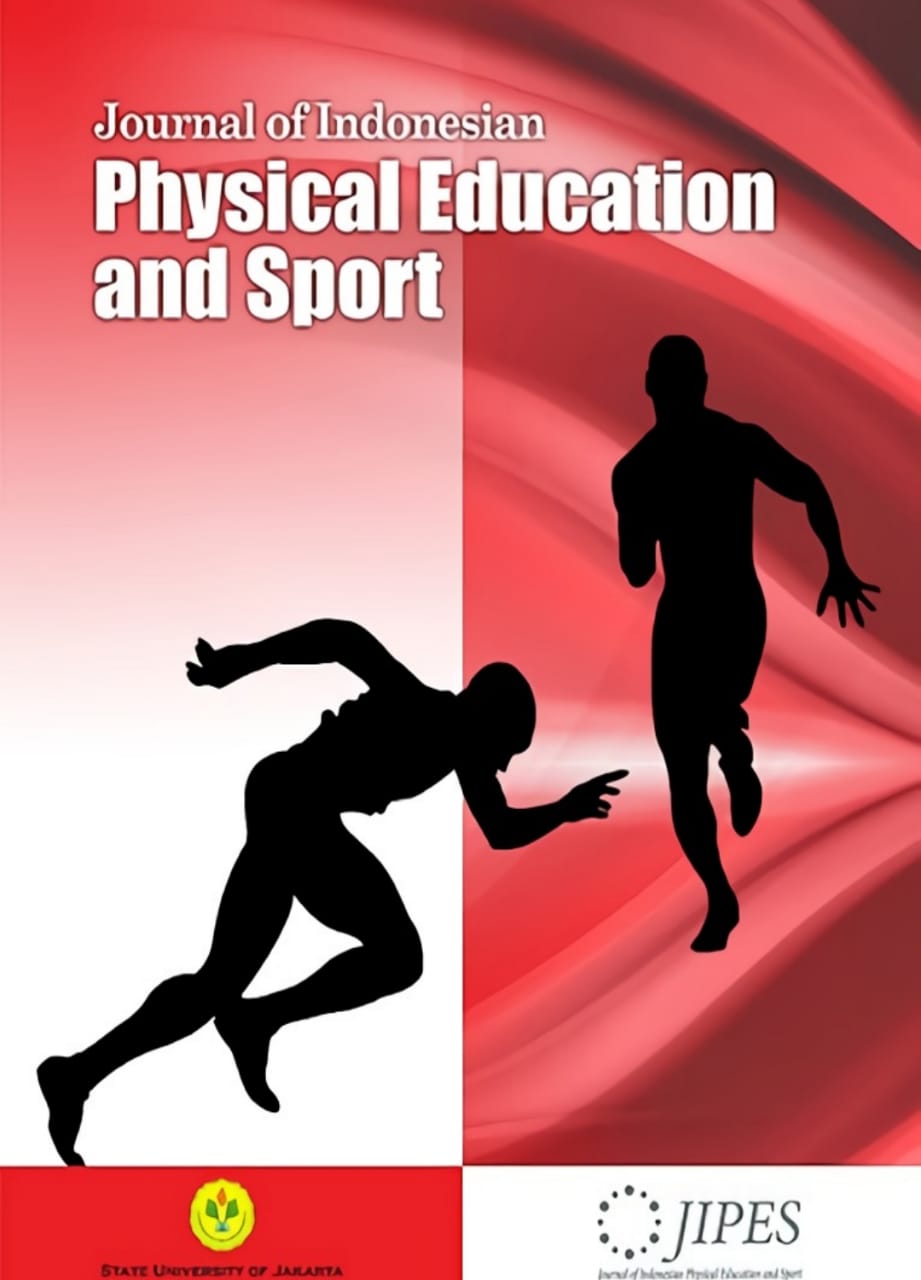Implementation Of Edmodo-Based Blended Learning Improving Short Distance Running Learning Outcomes for Bunda Kandungs Vocational School Students
DOI:
https://doi.org/10.21009/JIPES.081.01Keywords:
Blended learning, Edmodo, physical education, health and sports, short distance runningAbstract
Education is one of the areas that technology seeks to achieve through online learning. Online learning is indeed less effective because most of it causes problems both from the point of view of students. The blended learning method of learning is a form of learning system that combines online and offline systems that are applied in learning physical education, health and sports. The purpose of this research is to prove the phenomenon of technological advancement in the rapidly growing world of education and data that supports the progress of student learning, that blended learning can be used for modern learning solutions, so that students can study material before practice in the field to increase teaching achievement. The results of this study indicate that blanded learning based on edmodo can improve learning outcomes for short distance running can be seen from, the increase in learning outcomes in the pre-test shows students who complete 9 students, the increase occurs in cycle 1 to 20 students and continued at the stage of cycle 2 has increased results 25 students completed.
References
Ikart, E. M. (2019). Survey Questionnaire Survey Pretesting Method : An Evaluation of Survey Questionnaire via Expert Reviews Technique. Journal of Agricultural Education and Extension, 4(2), 1–17. https://doi.org/10.20849/ajsss.v4i2.565
Knook, J., Eory, V., Brander, M., Moran, D., Knook, J., Eory, V., … Knook, J. (2018). Evaluation of farmer participatory extension programmes Evaluation of farmer participatory extension programmes. Journal of Agricultural Education and Extension, 7(6), 1–17. https://doi.org/10.1080/1389224X.2018.1466717
Lakhal, S., Sévigny, S., & Frenette, É. (2014). Personality and student performance on evaluation methods used in business administration courses. Advances in Health Sciences Education, 5(3), 44–56. https://doi.org/10.1007/s11092-014-9200-7
Maksum, T. C. M. and A. (2012). Sport Development Index, Alternatif Baru Mengukur, Kemajuan Pembangunan Bidang Keolahragaan,Konsep,Metodologi dan Aplikasi,. Jakarta: Indeks.
Mubarak, H. (2012). Hubungan Antara Intensitas Latihan SKJ 2004 Dengan Tingkat Kesegaran Jasmani Pada Siswa SMP Negeri 2 Barru Kabupaten Barru. ,Jurnal Penelitian Fakultas Ilmu Keolahragaan Universitas Negeri Makassar, 5(6), 77–89.
Pablo, J. D. S. De. (2016). Olahraga dan Pendidikan Jasmani dalam Keutuhan NKRI. International Conference Od Education, 7(7), 55–67.
Rangga, Y. (2013). Perbandingan Tingkat Kebugaran Jasmani Siswa Kelas IX Rintisan Sekolah Berstandar Internasional SMP 1 Kawedan dan Siswa Kelas IX Sekolah Standar Nasional SMP 2 Kabupaten Magetan Pada Tahun 2013. Jurnal Penelitian Surabaya, 5(7), 113–125.
Ross, S. M. (2016). Motivation, Learning Strategies, and Performance in Physical Education at Secondary School. Journal American Physical Therapy Association, 5(4), 23–35.
Shepperson, T. L. (2013). Prevalence of Evaluation Method Courses in Education Leader Doctoral Preparation. Advances in Health Sciences Education, 8(1), 1–14.
Vernadakis, N. (2015). Assessing dance: A phenomenological study of formative assessment in dance education. Journal American Physical Therapy Association, 5(7), 100–119.
Winklen, C. (2016). Using developmental evaluation methods with communities of practice. Advances in Health Sciences Education, 5(6), 55–67. https://doi.org/10.1108/TLO-08-2015-0047










 </a > a
</a > a 